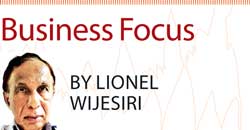18 Sep 2017 - {{hitsCtrl.values.hits}}

 Lee Iococca, one of the greatest American CEOs of all time, said, “The speed of the boss is the speed of the team.” He is absolutely right.
Lee Iococca, one of the greatest American CEOs of all time, said, “The speed of the boss is the speed of the team.” He is absolutely right.
Commitment and compliance are two very different states for any team. A compliant team is one that shows up because they have to. They may not actually punch a time clock but at the end of the day they shuffle their feet to the parking lot – they may even run out the door. They are working on the project because, well, what else would they do.
A committed team, on the other hand, treats the project like their own garden or pet – they obsess over it, they care for it, they own it. They are thinking ahead of how to do it better, already solving the next three problems that haven’t been discovered. The project just ‘clicks’. It’s much easier to go from a committed team to a compliant one. A couple of poorly managed challenges can easily break the chain and it’s much harder to go from a compliant team to a committed one.
So, how do you get a team together that ‘clicks’? How do you transform your team into a high-performing one? We will study a few simple steps you can take to help build a solid team that is engaged, exceeding expectations and most importantly, committed.
End-point in mind
I’ve observed many team leaders holding conversations with his team members to agree actions to complete a task or agree a change of behaviour when a team member is underperforming. In my experience, almost every team leader adopts an approach that I describe as ‘having the endpoint in mind’, in which he:
(1) Focuses on the action he wants his team members to take or the changes that he wants them to make in their behaviours.
(2) Attempts to influence a team member to act or change behaviour by using what he, the team leader, believes to be a logical argument or appropriate evidence of the need for his team member to act or make the change.
This approach often backfires and fails to achieve team leader’s aims. When he adopts this approach, he is focusing on the endpoint or outcome that he wants to achieve through having the conversation. His attention is primarily on his own thoughts as he follows his plan of how he intends the conversation to proceed: he will miss or ignore important information that his team member is trying to share with him.
Better option
Instead of ‘starting from the end point’, a more appropriate and successful place to start conversations with team members to gain their commitment to act or change their behaviour is to start from their grid position. This approach means beginning from where your team members are regarding their view about the need to act or change their behaviour rather than you focusing only on the outcome that you want to achieve.
You’re more able to gain the commitment of team members to act or change their behaviour when you fully understand the reasons why they do or don’t do something or behave as they do.
Here’s how to start from your team member’s grid position: Focus on and find out your colleague’s views or position regarding the current situation, standard of performance, need to change and so on.
Strive to find out whether and how important and worthwhile your colleague perceives the need to act or change his behaviour. Be alert and attentive to notice words and phrases that appear to have significant meaning to your colleague.
Explore the meanings that your colleague attaches to these words so that you improve your understanding of his views or perspectives by using phrases such as:
You mentioned [restate words) ... what exactly do you mean?’
You seem to put a lot of emphasis on [restate words].’
It appears to me that [restate or paraphrase words] are significant to you.’
Answer questions
Your aim in engaging work colleagues to ‘go the extra mile’ is to work together with a common commitment to achieve optimum outcomes for everyone involved. By doing so, everyone is unified in striving to achieve common objectives that directly or ultimately benefit your organisation, you and your staff.
You need to answer a series of questions to assess the commitment level of team members to work on a team.
Team choice
Do your team members genuinely want to participate on the team? Do they perceive that they had a choice about working on a particular team? Tapping into a team member’s commitment is much easier if they are participating by choice. Whenever possible, I would recommend voluntary
team participation.
Work is mission critical
Do your team members believe the team mission is important? Are they committed to accomplishing the team mission and expected outcomes? Is accomplishing their mission critical to their organisation achieving its broad mission? This is important because the team members want to feel as if they are part of something bigger than themselves. They need to understand where their team mission falls in the bigger organisational scheme, the overall leadership vision. All employees want to feel as if their work is important in the total scheme of the business.
Team members feel valued
Do your team members perceive that their service on the team is valuable to the organisation and to their own careers? Do they feel that their participation is advancing their career opportunities and bringing positive attention to their contributions? A double win is accomplished if the team members find themselves valued by the organisation and also receiving ancillary benefits.
These added benefits can include growing and developing their skills and career by participating on the team. Making new contacts and perhaps finding new mentors who are committed to their growth is a plus, too.
Attracting attention from departments and senior leaders with whom the employee does not usually interact will also add to the employee’s feeling valued by the organisation.
Additional benefits to the team members can also occur if a member has the opportunity to lead the team, perform as the notetaker, lead the team meetings, lead brainstorming sessions and facilitate meetings. Good leaders know this and allow the team members to acquire all skills, which will further the team success and also a member’s career possibilities.
Challenge, excitement and opportunity
Are the team members excited and challenged by the team opportunity? Do they see and understand that it is an opportunity to grow, contribute, attract attention and shine? If so, the chances of their commitment to the process and the outcomes are magnified.
Employees want to wake up every morning and feel optimistic about what they will tackle at work that day. This is so much better than waking up hating their job and dragging themselves into the workplace. How the organisation approaches, frames and assigns the opportunity can have a huge impact on the challenge and excitement experienced by the team members.
Recognition
Does your company have a track record of providing recognition for successful teams and their projects. Almost everyone likes some form of recognition. Make sure recognition is available at successful milestones, too.
This question is asked repeatedly in organisations. With so many employees contributing good and even great work, why is recognition supplied so sparingly? Your team members want and need to feel that their best work is recognized and appreciated.
If their leader recognizes successful milestones in the team’s progress, the team members’ commitment to their team and project will increase accordingly.
Pay attention to these areas and to the additional recommendations in all of the components suggested for successful team building. The more you can foster the appropriate environment for team success, the better your teams will perform and they will wallow less in dysfunctional behaviour.
(Lionel Wijesiri is a retired corporate director counting three decades of senior management experience. He is now an independent consultant and a freelance journalist. He may be contacted on [email protected])
06 Jan 2025 31 minute ago
06 Jan 2025 1 hours ago
06 Jan 2025 1 hours ago
06 Jan 2025 1 hours ago
06 Jan 2025 2 hours ago